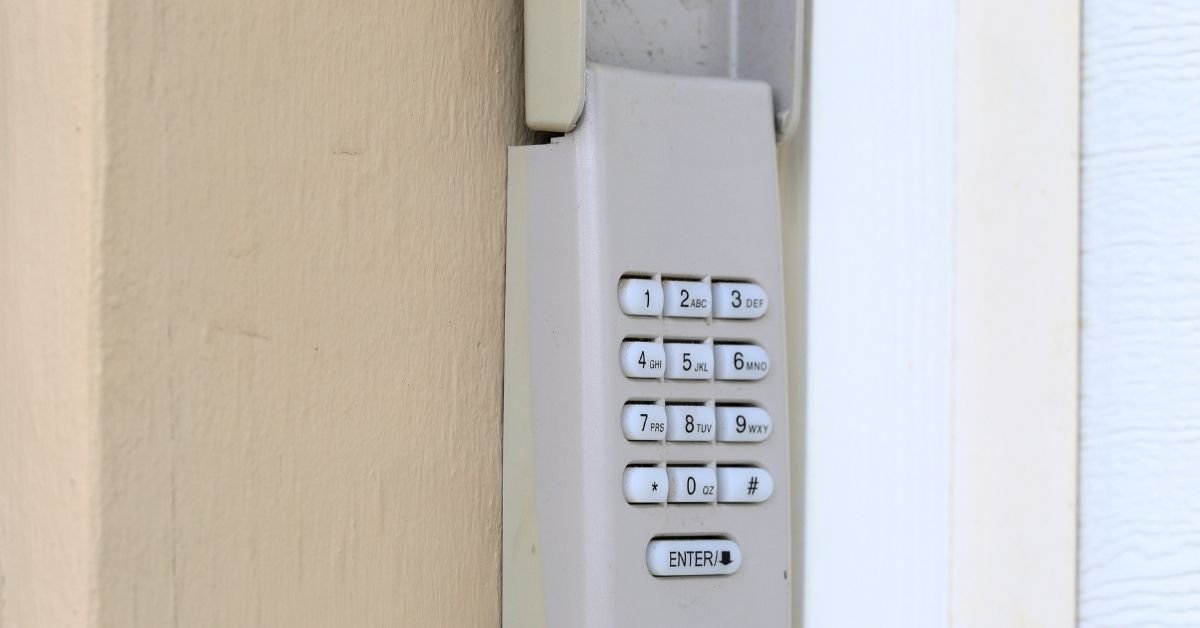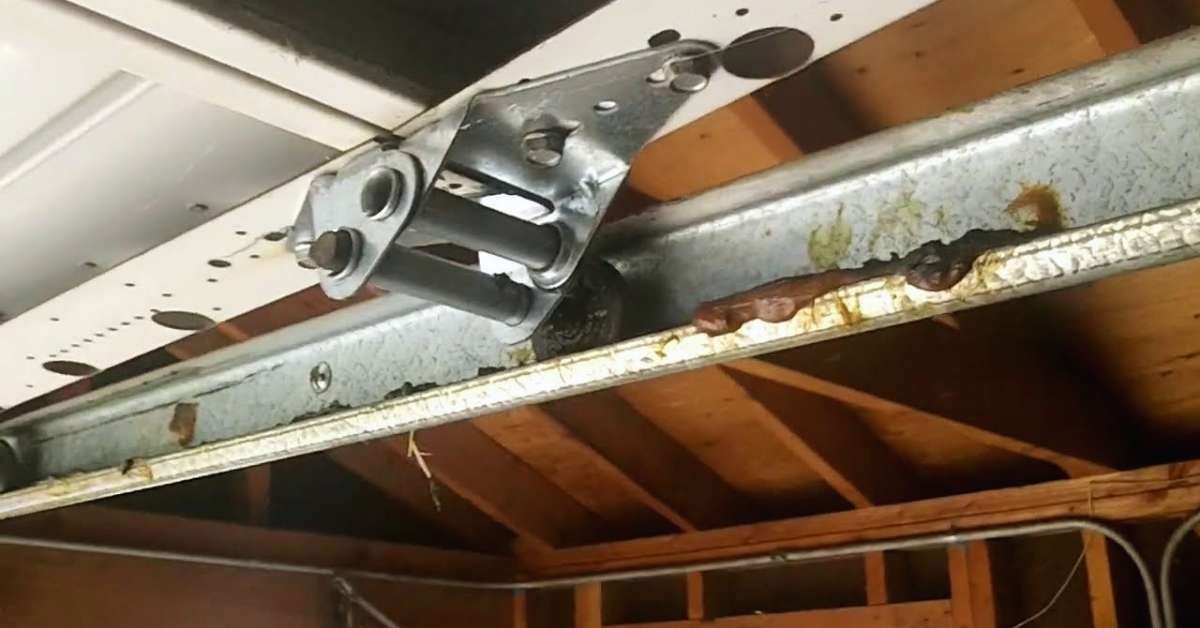How To Replace Garage Door Extension Springs: A Step-By-Step Guide For A Smooth Operation
Imagine a morning when you’re about to leave for work, and your garage door refuses to budge. Frustrating, right? Well, one of the common culprits behind this scenario is a broken extension spring. In this comprehensive guide, we’ll take you through the intricate process of How To Replace Garage Door Extension Springs step-by-step. Don’t worry; we’ll use plain language, making it easy for anyone to understand.
Table of Contents
Observing Garage Door Extension Springs
Garage door extension springs are coiled metal components that play a pivotal role in the functioning of your garage door. These springs are essential because they store and release energy, assisting in the lifting and lowering of the door. There are two primary types of garage door springs: extension springs and torsion springs. This article will focus on the former.

Signs Of A Broken Extension Spring: Common Symptoms Include
Before we dive into the replacement process, let’s discuss how to know about a broken or damaged extension spring. Being able to identify these signs can save you time and money. Common symptoms are:
1. Door imbalance: A crooked or unevenly hanging garage door.
2. Difficulty in opening: The door feels unusually heavy and needs to be easier to lift manually.
3. Unusual noises: Squeaking or popping sounds when operating the door.
4. Visible damage: Physical damage or gaps in the spring.
Safety Precautions Before You Begin
Safety should be your top priority when dealing with garage door extension springs. Before you start the replacement process, ensure that you have the following safety gear and tools on hand:
● Safety glasses
● Gloves
● Wrenches and pliers
● Vice grips
● C-clamps
● Ladder
Additionally, always disconnect the power to the garage door opener to prevent accidental activation during the replacement.
Step-By-Step Guide To Replacing Extension Springs
Now, let’s get into the nitty-gritty of replacing those extension springs. We’ve broken down the process into a series of easy-to-follow steps:
Step 1: Release Tension From The Old Springs
Relieving tension from garage door extension springs is a crucial safety step in the replacement process. These springs are under immense pressure, and if not handled properly, they can cause serious injuries or property damage. Safely releasing tension ensures that the springs won’t unexpectedly snap or unwind during the replacement. It also allows for a controlled and smooth removal of the old springs, making the entire process safer and more manageable. Releasing tension from garage door extension springs using vice grips is a precise task that requires careful execution.
Here are step-by-step instructions to help you perform this safely
1. Gather Your Tools: Ensure you have the necessary tools on hand, including safety glasses, gloves, and vice grips.
2. Locate the Safety Cables: Many garage doors have safety cables running through the extension springs. These cables are designed to prevent the spring from flying off if it breaks. Identify and locate these cables; they will be your primary point of contact.
3. Position Yourself Safely: Stand to the side of the spring, never directly in front of it. This minimizes the risk of injury if the spring were to release tension suddenly.
4. Secure the Safety Cable with Vice Grips: Carefully clamp the vice grips onto the safety cable near the end that attaches to the garage door track. Ensure a firm grip, but avoid overtightening to prevent damaging the cable.
5. Test the Vice Grip Connection: Gently tug on the vice grips to verify that they are securely attached to the safety cable and can hold the spring’s tension.
6. Slowly Release Tension: Begin to release tension by gradually and steadily loosening the vice grips. Do this in small increments, one turn at a time. Keep a close eye on the cable, ensuring it remains securely attached.
7. Monitor the Spring: As you release tension, observe the extension spring. It should start to relax and extend without any sudden movements. Continue releasing tension until the spring is fully extended and lacks any residual tension.
8. Double-Check: Once you’ve safely released tension from both extension springs, double-check that the garage door is fully supported and secure before proceeding with the replacement.
Step 2: Remove The Old Springs
1. Identify the damaged springs.
2. Ensure tension is safely released.
3. Unhook the springs from the pulleys.
4. Disconnect from the garage door track.
5. Remove the old springs.
Keeping Track of Orientation:
Note which end was attached to the pulley system and which to the garage door track. This ensures the correct installation of the new springs, preventing balance and functionality issues.
Step 3: Install The New Springs
1. Ensure the garage door is fully open to minimize tension.
2. Attach one end of the new spring to the pulley system using an S-hook or a securing bolt.
3. Connect the other end to the garage door track in the designated slot.
4. Ensure the spring is positioned correctly, with the safety cable running through the middle of the spring.
5. Repeat the process for the second spring if you’re replacing both.
The Role Of Safety Cables
Safety cables are a crucial safety feature. They run through the extension springs, preventing them from flying off if they were to break. In the event of a spring failure, safety cables contain the spring’s energy, reducing the risk of injury or property damage. Always ensure the safety cables are appropriately threaded through the extension springs and securely attached to both ends.
Step 4: Reattach And Test
1. Position the new extension springs with one end attached to the garage door track.
2. Feed the other end through the pulley wheel, ensuring it’s properly seated.
3. Secure the spring to the pulley by using an S-hook or bolt.
4. Verify that the spring is centered on the pulley wheel for balanced tension.
5. Repeat this process for the second spring if applicable.
Importance Of Testing The Garage Door After installing
After installing the new extension springs, it’s necessary to test the garage door’s operation. Open and close the door manually to ensure it moves smoothly and without any jerking or imbalance. Testing allows you to confirm that the springs are correctly adjusted and that the door operates as expected. If you notice any issues, such as uneven movement or excessive resistance, it may indicate an adjustment problem. Acknowledging these issues promptly ensures the safe and efficient operation of your garage door. Common Mistakes to Avoid . Mistakes can happen, but it’s crucial to avoid them during this DIY project.
Skipping Safety Precautions
One of the most significant mistakes you can make when replacing garage door extension springs is neglecting safety precautions. Safety should always be your top priority. This includes wearing appropriate safety gear, such as safety glasses and gloves. Also, make sure to follow safety procedures when releasing tension from the old springs to prevent accidents. Ignoring these precautions can lead to severe injuries or damage to your property.
Using The Wrong Springs
Selecting the correct replacement springs is essential to the success of your garage door repair project. Using the wrong springs, whether they’re the wrong size or type, can result in a malfunctioning garage door or even pose safety risks. It’s essential to measure your existing springs accurately and consult with experts if needed to ensure you choose springs with the proper specifications for your door’s weight and design.
Incorrect Installation
Precision is critical when it comes to attaching new extension springs. Incorrect installation can lead to an imbalanced garage door, causing it to operate improperly or even pose a danger to users. It’s essential to follow the step-by-step instructions provided in this guide carefully. If you need more certainty about your ability to install the springs correctly, it’s always better to seek professional assistance to avoid costly mistakes.
Neglecting Maintenance
One of the most common errors homeowners make is neglecting maintenance after replacing garage door extension springs. Maintenance is essential for preventing future issues and ensuring the longevity of your springs. Regularly inspecting your springs and other garage door components for wear and tear, lubricating moving parts, and balancing the door are all crucial tasks.
Please perform these maintenance routines to avoid premature wear of your springs and additional repair costs down the road. By avoiding these common errors and following the guidelines outlined in this comprehensive guide, you can successfully replace garage door extension springs while ensuring safety, proper function, and long-term reliability for your garage door.
When To Call A Professional
While we believe in empowering homeowners with DIY knowledge, there are situations where professional help is the safer option. Circumstances that warrant calling a garage door technician include:
- If you’re uncomfortable with any part of the process.
- If the garage door is under warranty.
- If there are multiple broken components.
Preventive maintenance can significantly extend the lifespan of your garage door extension springs.
Here Are Some Practical Tips
Regular Lubrication
Regular lubrication is a vital maintenance task that should be noticed. The moving parts of your garage door, including hinges, rollers, and springs, require proper lubrication to operate smoothly and quietly. Lubrication helps reduce friction and wear, extending the lifespan of these components. It also prevents annoying squeaks and noises that can develop over time. To lubricate these parts, use a high-quality silicone or lithium-based garage door lubricant. Apply the lubricant sparingly to hinges, rollers, and springs, ensuring they move effortlessly.
Visual Inspections
Visual inspections are a simple yet effective way to monitor the condition of your garage door extension springs and other components. Regularly examine the springs for signs of wear and tear, such as rust, cracks, or gaps. Look for any unusual deformities or changes in shape. If you notice any of these issues, it’s essential to address them promptly. Visual inspections can help you catch potential problems early, preventing more extensive damage and costly repairs down the road.
Balancing the Door
Maintaining the balance of your garage door is crucial for reducing stress on the extension springs and ensuring smooth operation. To check the balance, disconnect the automatic opener and manually lift the door about halfway. If the door stays in position, it’s appropriately balanced. If it rises or falls on its own, it’s unbalanced.
To balance it, adjust the tension on the springs by turning the spring adjustment nuts on each side of the door. This simple task ensures that the springs don’t have to work harder than necessary, extending their lifespan and preventing issues. By regularly performing these maintenance tasks, you can keep your garage door in optimal condition, reduce wear on the extension springs, and ensure that your door operates smoothly and quietly for years to come.
Reminder Note
Replacing garage door extension springs is a manageable task when approached with the proper knowledge and precautions. We have tried to help you tackle this DIY project. Remember, safety comes first, and when in doubt, don’t hesitate to seek professional assistance. By following these steps and maintaining your springs, you’ll ensure the smooth operation of your garage door for years to come.
Choosing The Right Replacement Springs
Selecting the correct replacement springs is a critical step in this process. Extension springs come in various sizes and strengths, and using the wrong ones can lead to issues or accidents. Here’s how to make the right choice:
- Measure Your Existing Springs: Begin by measuring the length, diameter, and wire size of your current extension springs. This information will help you find replacements that match the specifications.
- Identify the Spring Type: Extension springs are available in open-loop and double-looped styles. Make sure you choose the type that matches your existing springs.
- Consider the Door Weight: The weight of your garage door determines the spring’s lifting capacity. Consult your garage door’s manual or seek professional advice to determine the door’s weight and choose springs accordingly.
- Quality Matters: Don’t compromise on quality. Investing in high-quality extension springs ensures longevity and reliable performance.
- Consult with Experts: If you need clarification on which springs to purchase, consult with garage door professionals or specialists at your local hardware store. They can provide expert advice based on your specific needs.
- By taking the time to select the right replacement springs, you’ll ensure a successful and safe garage door repair.
Troubleshooting And Fine-Tuning
After replacing the extension springs, it’s essential to troubleshoot and fine-tune the door’s operation.
● Checking the balance of the door to ensure it opens and closes smoothly.
● Making minor adjustments to the spring tension if needed.
● Lubricating all moving parts, including hinges and rollers, for optimal performance.
Final Thoughts And Maintenance Tips
In addition to the steps outlined in this guide, it’s essential to emphasize the importance of regular maintenance to extend the lifespan of your garage door extension springs. Simple tasks like inspecting for wear and tear, lubricating moving parts, and ensuring proper door balance can go a long way in preventing future issues.
To sum up, you now possess a comprehensive understanding of How To Replace Garage Door Extension Springs, how to identify issues, replace them safely, and maintain your garage door for smooth operation. Remember that safety should always be a priority, and if you need clarification on any aspect of the process, feel free to seek professional assistance. By following these guidelines and staying proactive with maintenance, you’ll keep your garage door running smoothly for years to come.






